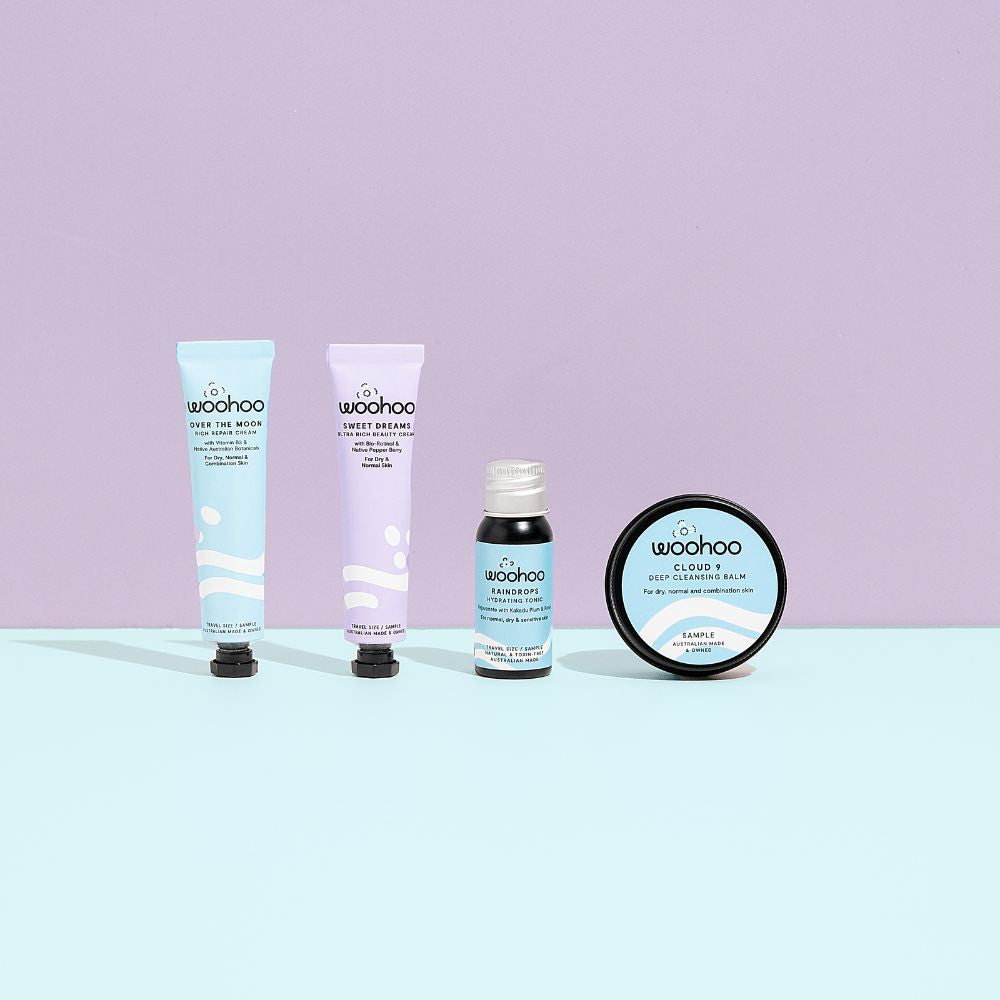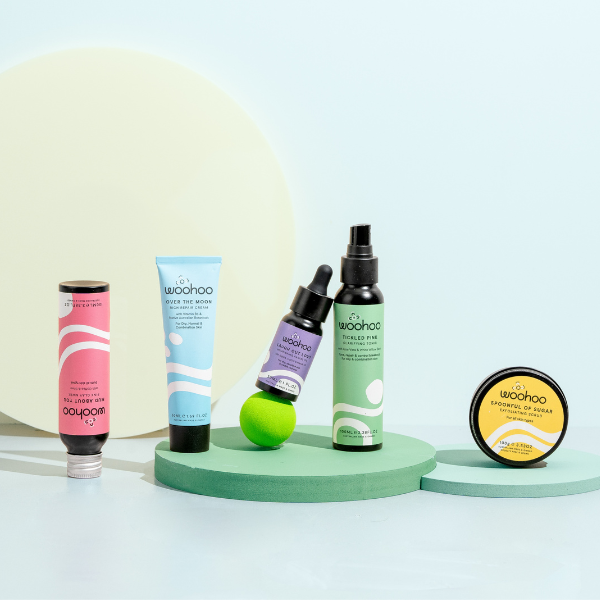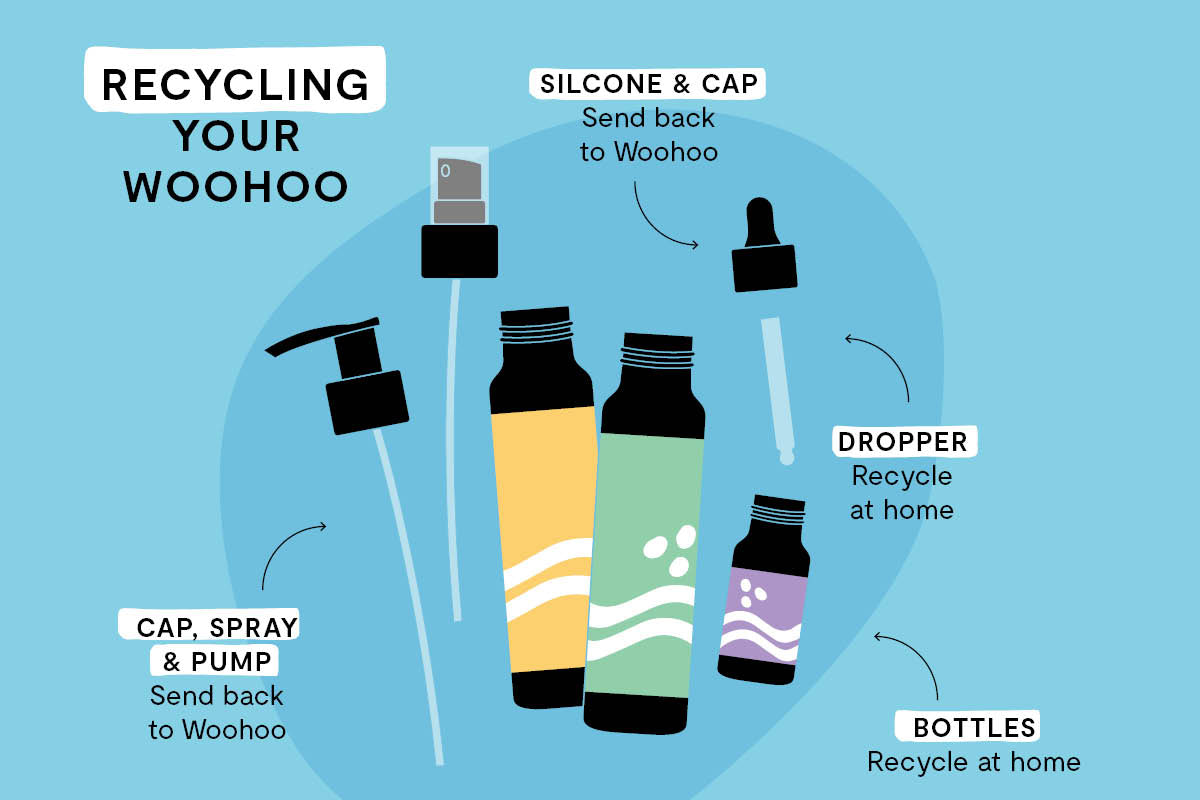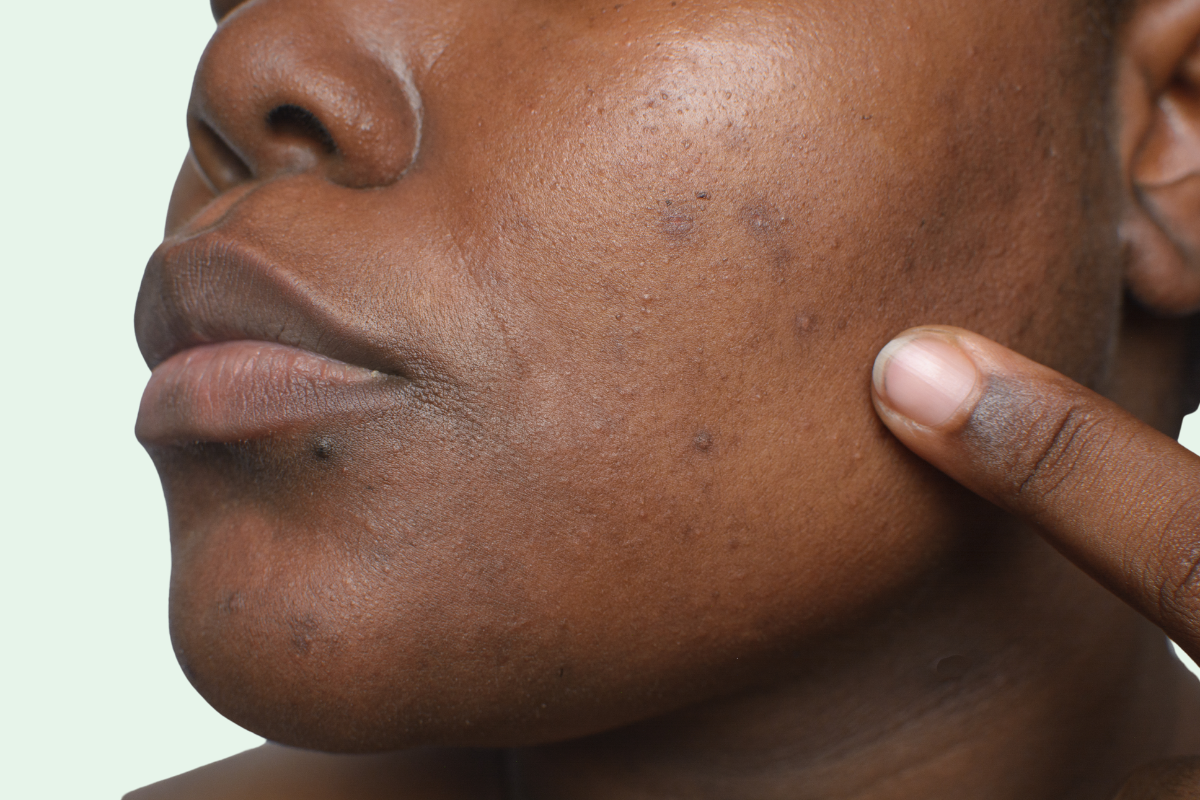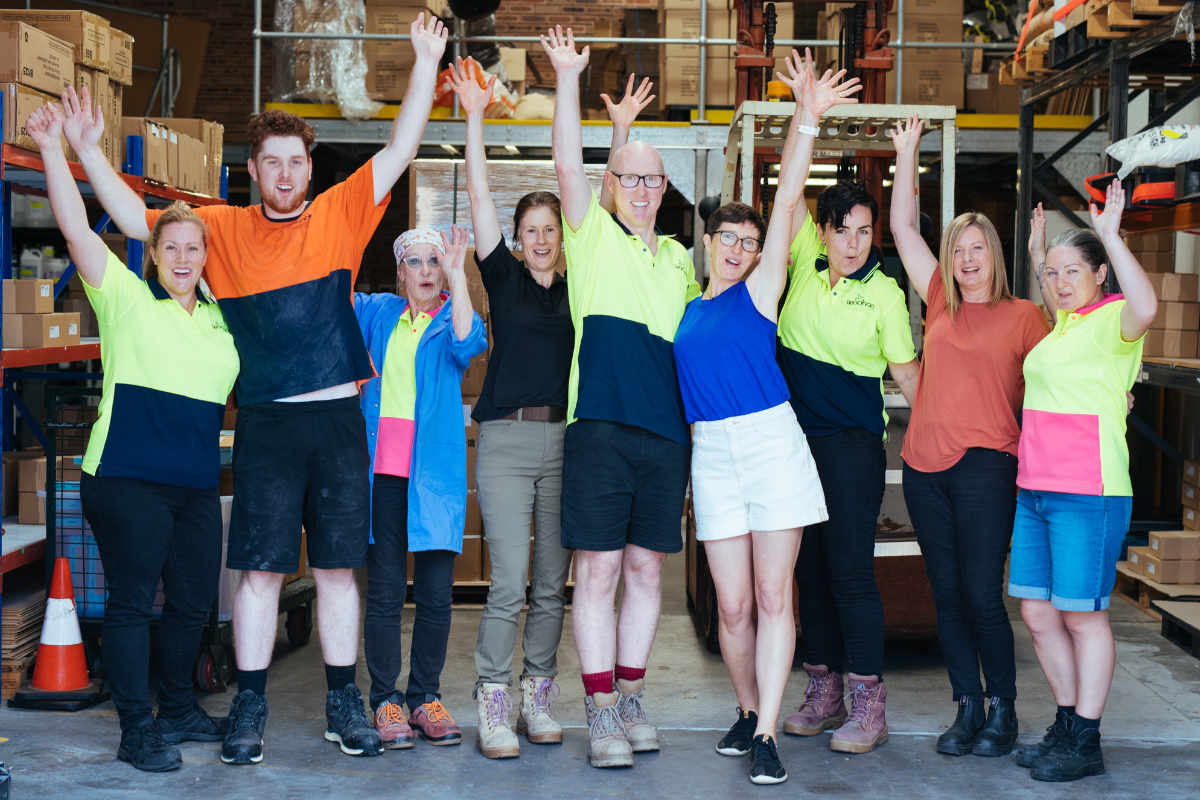
What do you want from your skin care?
Maybe you want the highest quality, purest, 100% natural skincare that’s non-toxic and good for you too? Sounds good, right?
Sounds amazing to us. But if your skincare products contain water (or aloe vera), there’s something else you need to think about too.
When you think of natural products, “unsafe” isn’t usually a word that comes to mind. But there are times when they can be unsafe … and be a risk to your health.
By law in Australia you can only sell products that are safe. Where it gets confusing though, is that there no definition of what makes a product safe.
Natural skincare products can become unsafe when they are not preserved and they become the #1 holiday destination for bacteria.
We have made a commitment to only use 100% naturally sourced ingredients in Woohoo Skincare products. We didn’t realise at the time just what we were getting ourselves into and how tricky it would be!
The Black Art of Natural Preservatives
Any skincare product containing water needs to have preservatives to stop it from becoming a bacteria haven.
There is no such thing as a ‘preservative free’, but some products can technically claim that they’re ‘preservative free’ by using a preservative that is classed as a fragrance. So instead you’ll see ‘fragrance’ on the ingredient label (these can either be natural or synthetic).
Synthetic preservatives (like parabens) are BRILLIANT at killing bacteria. They certainly get the gold medal. But many of us are wary of their potential health concerns. This has led to the rise of the natural preservative.
Natural preservatives work a little different to their synthetic cousins. Instead of killing the bacteria they prevent them by creating an unfriendly environment. They are the security guards turning away the gate crashers at the bacteria party.
So since natural preservatives don’t have the same bacteria-killing power, you need to treat your natural products gently.
If just a few gate crashers turn up, the security guards stop them all. But if a whole hoard of gate crashers arrives then the security guards will be outnumbered.
What can I do to help?
The best tip to keep your natural products bacteria free is is to always have clean and dry hands before using them.
If a product is in a bottle, tube, or pump it’s much easier to keep bacteria out. It’s those pesky products in jars that cause the biggest challenge. A spatula can be handy for getting product out of jars, but you will also need to remember to keep your spatula clean and bacteria free too.
Our very popular Cloud 9 Deep Cleansing Balm lives in a jar (we have tried other types of packaging but it’s just too thick), so please take extra care with your cleansing balm. A problem we hear about occasionally with the Cloud 9 is when you use the balm in the shower and let water (or even steam) get in…. that’s the quickest way to decrease your balm’s shelf life  A good alternative is to apply your balm before you hop into the shower, and remove it in the shower. Good news though – we have a most deliciously wonderful, shower-friendly cleansing oil on the way!
A good alternative is to apply your balm before you hop into the shower, and remove it in the shower. Good news though – we have a most deliciously wonderful, shower-friendly cleansing oil on the way!
Store all of your products in a cool, dry, dark place. Anything over 30 degrees starts to degrade your product. Just like a full bodied red wine, 18-19 degrees Celsius is perfect!
Ingredients masquerading as preservatives
Some ingredients have a reputation as being a preservative but unfortunately they aren’t, so don’t be tricked into feeling protected from bacteria just because they’re in your natural skincare product.
These are NOT preservatives:
- Grapefruit seed extract
- Rosemary extract
- Vitamin E
Vitamin E and Rosemary are anti-oxidants that are fantastic at increasing the shelf life of oils and butters but they do not stop the beasties setting up house in your creams, lotions and potions.
Manufacturers should be doing some (or all) of these tests for product safety
Any good skincare manufacturer should be testing their products to make sure they’re safe (and that they’ll stay that way!). There are a few types of tests we do:
- Microbial Testing
- PET (Preservative Efficacy Testing)
- Stability Testing
Even though they are not mandatory, these tests are the best way to determine if a product is safe and will remain that way for a while.
Microbial testing is the easiest and fastest test to do. It checks to see if the product has been contaminated by any microorganisms. If a product passes its microbial testing, we move onto the next tests.
In PET, a sample is sent to a lab and they test whether the preservatives can keep the bugs at bay. The test procedures involve inoculating product samples with a range of bugs and seeing how the product holds up. PET follows an International Pharmacopoeia Protocol, which means that at the end of the test we have confidence that the formula is safe.
Stability testing can be done by either an independent lab or by the manufacturer themselves. Stability tests are done to determine shelf life of a product. We store products at different temperatures and observe them every week to see when any changes occur (like smell, colour, or viscosity/thickness). The goal is for nothing to change for as long as possible. The faster changes occur the shorter the shelf life of the product.
The problem is that no manufacturer wants to wait 12 or 18 months for a stability test to be completed before selling a product to the public. Lucky we have a little trick up our sleeves. By storing a product at 40 degrees C, we can speed up time. At 40C 1 week equals 1 month sitting on a shelf at room temperature. So a stability test for 18 months really only takes 18 weeks.
Stability is important because if a product starts to separate earlier than desired then the preservatives are no longer effective and the product is no longer safe.
There are oodles of natural preservatives available to us skincare manufacturers, but in our experience only a handful of them a truly effective and can stand up to the bacteria bad guys. We’ve been through a LOT of trial and error and testing to find a natural preservative system that we’re confident in.
Over the past few months we’ve been tinkering in the lab with a new preservative that we’d heard incredible things about. We actually got quite excited and even thought about reformulating some of our products to use it. But after putting it through some pretty grueling testing, it just didn’t hold up as well as the preservatives we already use which have proven themselves in lots of tests. So our formulas are staying as they are for now 
Well, now you’ve been let in on some of our little secrets – hopefully we haven’t completely fried your brain with all this technical talk!
Time for a coffee 
